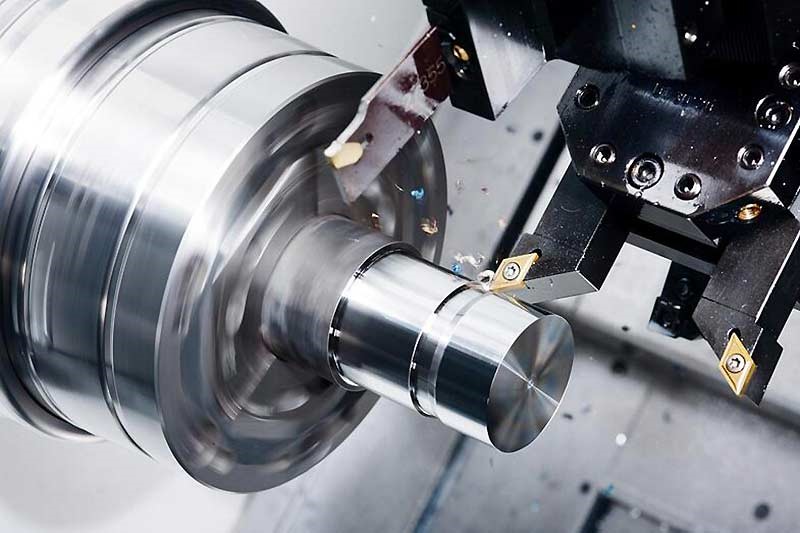First: the two bearing blocks are uneven, or the rotor of the motor is not concentric with the rotor of the Raymond mill, which will cause the bearing to be subjected to additional load shock, resulting in poor heat dissipation of the bearing. Reminder: In this case, stop the machine immediately to eliminate the damage to avoid early damage of the bearing.
Second: too much lubricant in the bearing, too little or aging is also the main reason for the bearing heat dissipation is not good. Warm reminder: According to the use of the book requirements, quantitatively fill the lubricant on time, the general lubrication accounts for 70% of the bearing space. %-80%, too much or too little is not conducive to bearing lubrication and heat transfer.
Third: the matching of the bearing cap and the shaft of the Raymond mill is too tight, and the bearing and the shaft are too tight or too loose, which will lead to poor heat dissipation of the bearing. Warm reminder: Once this happens, the bearing should be stopped and removed. Trim the friction parts and reassemble as required.
The bearing is the most fragile component of the Raymond mill. Our staff should pay attention to the temperature rise of the bearing and the noise of the bearing part at any time. Now it is necessary to deal with the abnormality as soon as possible, and the right medicine can fully recover.
What is CNC Turning
In CNC turning, a chuck (or specialized clamp) holds bars of material and, as they are rotated, a tool is fed to the piece to remove material to create a specific shape. A turret, which holds a group of tools, is programmed to move along the work piece in three different axes of motion to shape the material according to the assigned specifications.
Since CNC turning involves removing material from a work piece, it`s considered a [subtraction machining" process. It is done on a lathe machine, which can be used on all types of material, from wood to metal to plastic. It can also be done on a mill or a drill press.
Turning is primarily used to create cylindrical parts. It can be completed on the outside or the inside of a work piece, which is known as boring. The process can also be used to conduct various other operations, including:
· Grooving: Cuts grooves or creates narrow cavities in work pieces.
· Taper turning: Creates a gradually decreasing diameter in a cylindrical shape.
· Drilling: Produces round holes, which are typically for screws and bolts.
· Facing: Cuts a flat surface perpendicular to the axes of the milling cutter.
· Parting: Separates one part of the work piece from another.
· Knurling: Creates vertical, horizontal or crossing lines on the work piece.
· Threading: Makes grooves that can be screwed into other objects.
CNC Turning process
l Creating a digital representation of the part in CAD
l Creating the machining code from the CAD files
l CNC lathe setup
l Manufacturing of the turned parts
Capabilities
|
|
Typical |
Feasible |
|
Shapes: |
Thin-walled: Cylindrical |
|
|
Part size: |
Diameter: 0.02 - 80 in |
|
|
Materials: |
Metals |
Ceramics |
|
Surface finish - Ra: |
16 - 125 μin |
2 - 250 μin |
|
Tolerance: |
± 0.001 in. |
± 0.0002 in. |
|
Max wall thickness: |
0.02 - 2.5 in. |
0.02 - 80 in. |
|
Quantity: |
1 - 1000 |
1 - 1000000 |
|
Advantages: |
All materials compatible |
|
|
Disadvantages: |
Limited to rotational parts |
|
|
Applications: |
Machine components, shafts, engine components |
|
Suitable Materials for Turning
In turning, the raw form of the material is a piece of stock from which the workpieces are cut. This stock is available in a variety of shapes such as solid cylindrical bars and hollow tubes. Custom extrusions or existing parts such as castings or forgings are also sometimes used.
Turning can be performed on a variety of materials, including most metals and plastics. Common materials that are used in turning include the following:
l Aluminum
l Brass
l Magnesium
l Nickel
l Steel
l Thermoset plastics
l Titanium
l Zinc
When selecting a material, several factors must be considered, including the cost, strength, resistance to wear, and machinability. The machinability of a material is difficult to quantify, but can be following characteristics:
l Results in a good surface finish
l Promotes long tool life
l Requires low force and power to turn
l Provides easy collection of chips


Cnc Turning,Cnc Mill Turn,Cnc Milling And Turning,Precision Cnc Turning
Suzhou FCE precision electronics Co., LTD , https://www.sjfukeyifcesz.com
![<?echo $_SERVER['SERVER_NAME'];?>](/template/twentyseventeen/skin/images/header.jpg)